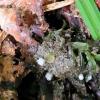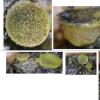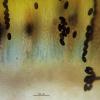
21-12-2025 09:32
Hello.A tiny ascomycete found embedded in wood in

22-12-2025 00:47
Patrice TANCHAUDBonsoir, récolte à proximité du milieu dunaire

21-12-2025 21:32
Pol DebaenstHello, Garden, Burgweg 19, Veurne, BelgiumOn 10/1

21-12-2025 21:40
Isabelle CharissouBonjour, j'aimerais connaitre les références de

21-12-2025 21:31
Pol DebaenstHello, Garden, Burgweg 19, Veurne, BelgiumOn 10/1

21-12-2025 21:31
Pol DebaenstHello, Garden, Burgweg 19, Veurne, BelgiumOn 10/1

20-12-2025 23:08
Patrice TANCHAUDBonsoir, récolte sur sol sablonneux dans l'arri�

20-12-2025 15:47
Mirek GrycHi.These grew on pine wood that was heavily covere
• Seem comparable to A. furfuraceus, but some of the species seem quite similar and I may have missed something.
• Any feedback appreciated.
Habitat: On sodden dung of a wild animal, seems like a small to medium size herbivorous mammal (possibly deer), in undergrowth, swampy area, mixed deciduous woodland, Low Weald, England, early September, after lots of rain.
Apothecia: Sulfureous colour at maturity (yellowish-greenish), diameter < ~3.5 mm, height < 1 (2) mm, initially whitish-translucent and pulvinate, then cupulate to discoid,sessile, superficial, crowded but mostly immature, receptacle initially more whitish and translucent, with uneven and granular appearance, disc appears more gelatinous and yellowish, plano-concave in maturity, margin distinct, round, and slightly crenulate, sometimes out-rolled, mature asci noticeably protruding with blackish spores.
Associate: Coprinopsis sp.
Asci: 330-350 x 28-31 um, 8-spored, operculate, cylindrical clavate, apex rounded when fully turgid, otherwise acute-truncate, obtusely biseriate when turgid, rarely with an unpigmented or deformed spore, mature asci protruding distinctly from the hymenium (detaching?).
Spores: 21-23 x 10-11.5 um, purple, ellipsoid, ornamentation of longitudinal crevices, often anastomising, sometimes mostly parallel and other times forming an irregular reticulum, with a hyaline sheath often seen as globose attachment.
Paraphyses: Slightly inflated to distinctly capitate at apex, apparently hyaline.
Exudate: In upper part of the the hymenium (epithecium), thick, yellow, gel-like, on margin and surface of the excipulum more brownish and granular.
Ectal excipulum: Textura globosa.

Your mushroom looks like A.furfuraceus which can be quite variable in terms of ornamentation and spore size. A.perplexans, quite close, is nevertheless differentiated by spore ornamentation and a slightly different exipulum. The reaction of the asci to Melzer would also be different but I have rarely found this species. A.Michaudii has smaller spores and less dense spore ornamentation.
Michel.
The spores are on the small side of the R. furfuraceus range, but the asci are too broad for A. michaudii and A. perplexans according to the Yi-Jian Yao key.
The ornamentation seems to be between the denser A. perplexans and the sparser A. michaudii. I also checked the iodine reaction now and the asci are quite strongly amyloid, which seems to rule out A. perplexans also. As you say, A. michaudi also seems to have smaller spores, and it is described as stipitate to substipitate.



 10x-0002.jpeg
10x-0002.jpeg